Want to know more about the fish, birds, and other marine life in the Kahuku region? Scroll below to learn about the local marine life and follow the honu on our Turtle Tracker!
TURTLES (HONU) *THREATENED*
The type of sea turtles most frequently observed at Turtle Bay is the green sea turtle. The green sea turtle is listed as a threatened species under federal and state law. Hawaiian green sea turtles have shown a good population recovery in recent years, although they are still plagued with a papilloma virus that causes disfiguring tumors. Honu are spotted on every kayak tour. After all it isn’t called Turtle Bay for nothing.
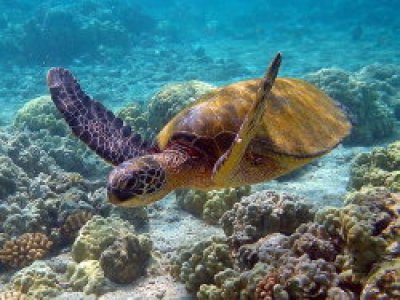
TROPICAL FISH (HUMUHUMUNUKUNUKUAPUA'A)
Hawai’i is home to over 435 different species of tropical fish. From the oddly shaped trumpet fish to the humuhumunukunukuapua’a Hawaii’s state fish, several of these species can be observed from your kayak or while snorkeling. Raccoon butterfly fish, yellow tangs, wrasse, moorish idols, parrotfish, goat fish, octopus and moray eels are among the many frequently spotted underwater animals found in the coral reefs around Turtle Bay.
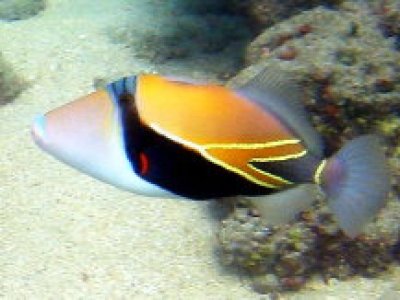
MONK SEAL (‘ILIO-HOLO-I-KA-UAUA) *ENDANGERED*
Hawaiian monk seals are among the most critically endangered mammals in the world. Only about 1,200 seals are alive today. There is a small and growing population of seals in the main Hawaiian Islands and a 2005 survey observed 76 seals here. Monk seals frequently haul-out on our shorelines to rest and molt. They may look sick, but they are usually perfectly healthy. Beaches at Turtle Bay are isolated from large human populations and are a favorite haul-out location. Shaka Kayaks team members work hand in hand with the HMRSTO to help protect the local monk seals at Kawela Bay.
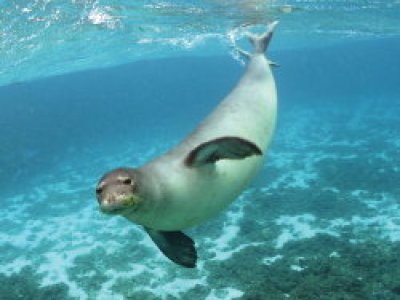
SPINNER DOLPHIN (NAI‘A)
Hawaiian spinner dolphins are best known for their above-water displays of leaping. A single spinning leap can include as many as four body revolutions. Spinner dolphins are sometimes found in association with bottlenose dolphins or humpback whales in Hawai’i, which may benefit one or both species. At night the Nai‘a begin to hunt at depths of up to 3000 feet. As dawn comes they gather in shallow bays to sleep. Although not common, they have been spotted off Turtle Bay. Shaka Kayaks is a proud supporter of the Dolphin SMART program and abide by their guidelines.
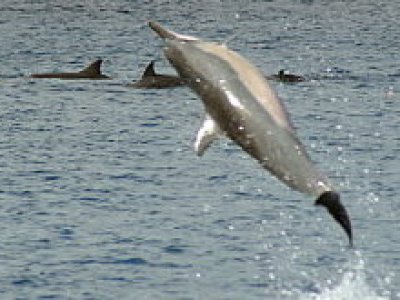
HUMPBACK WHALE (KOHOLA) *ENDANGERED*
As many as 10,000 humpbacks come to Hawai’i every year to mate, give birth and nurse their calves. Hawaii’s humpback whale season runs from November through May, so odds of seeing them while on tour are very rare. However, early and late sightings are possible and the singing of the Kohola have been heard through the bottom of the kayak. Special protection is provided inside the Hawaiian Islands Humpback Whale National Marine Sanctuary in which Turtle Bay is located.
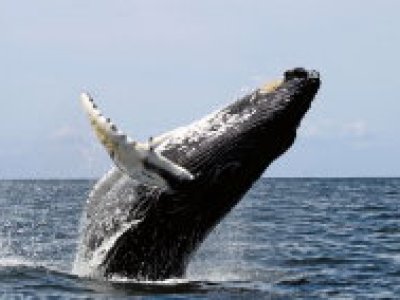
HAWAIIAN STILT (AE‘O) *ENDANGERED*
The Hawaiian stilt is a slender wading bird that grows up to 15 inches in length. Ae‘o use a variety of aquatic habitats but are limited by water depth and vegetation cover. Specific water depths of 13 cm (5 inches) are required for optimal foraging. Nest sites are frequently separated from feeding sites and stilts move between these areas daily. Nesting sites are adjacent to or on low islands within bodies of fresh, brackish, or salt water. They have been seen flying from their islands to feed while on tour. The ae‘o was once a popular game bird, but waterbird hunting was banned in 1939. This is the first of 4 endemic and endangered Hawaiian waterbirds.

HAWAIIAN MOORHEN (‘ALAE ‘ULA) *ENDANGERED*
The ‘alae ‘ula is known as the most secretive native waterbird. In Hawaiian legend, these birds were thought to have brought fire from the gods to the Hawaiian people. These secretive birds can be found in freshwater marshes, taro patches, irrigation ditches, reservoirs, and wet pastures. They favor dense emergent vegetation near open water, floating or barely emergent mats of vegetation or water depths of less than 3 feet. Surveys in the 1950s and 1960s estimated no more than 57 individuals. These endangered birds are found in the James Campbell National Wildlife Refuge next to Turtle Bay and have been spotted by the guides on the golf course.
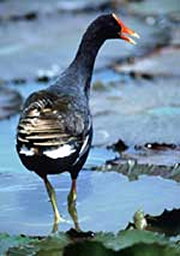
HAWAIIAN COOT (‘ALAE KE‘OKE‘O) *ENDANGERED*
Another of the four endemic and endangered birds seen and heard around Turtle Bay is the Hawaiian coot. ‘Alae ke‘oke‘o are found in fresh and brackish-water marshes and ponds. They build floating nests in aquatic vegetation, in which four to ten eggs are laid. Adults defend their nests vigorously. The ‘Alae ke‘oke‘o eats seeds and leaves of aquatic plants, insects, tadpoles, and small fish. Their calls include a variety of short, harsh croaks. This endemic bird of Hawai‘i is smaller than its mainland relatives, measuring 15 inches in length. Chicks are able to run and swim soon after hatching but maintain contact with parents by frequent calling.
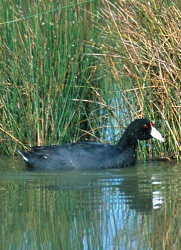
HAWAIIAN DUCK (KOLOA MAOLI) *ENDANGERED*
Koloa can be found in lowland wetlands, river valleys, and mountain streams. They are cautious ducks that travel in pairs. Hawaiian duck eat mollusks, insects, and freshwater vegetation. They can begin breeding at one year old and nest year-round. Because their nests are established on the ground, they are highly vulnerable to mongoose, cat, pig, and dog attacks. Koloa are endemic and used to be found on all the main Hawaiian islands. People first noticed them to be rare around 1915. This Hawaiian duck was listed as an endangered species in 1967 under the Federal Endangered Species Act. They have been spotted in Punahoolapa Marsh on Turtle Bay property.

BROWN BOOBY (‘A )
‘A are spectacular divers, plunging into the ocean at high speed. They mainly eat small fish or squid which gather in groups near the surface and may catch leaping fish while skimming the surface. Although they are powerful and agile fliers, they are particularly clumsy in takeoffs and landings; they use strong winds and high perches to assist their takeoffs. Brown booby pairs may remain together over several seasons. They perform elaborate greeting rituals. ‘A are quite commonly seen just offshore from Turtle Bay and if you are lucky enough to see two of them you can go home and tell your friends you saw a great pair of “brown boobies” on the kayak tour!
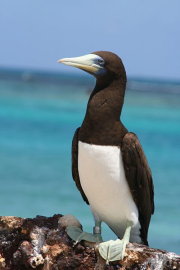
FRIGATE BIRD (IWA)
Frigate birds are pelagic piscivores which obtain most of their food on the wing. A small amount of their diet is obtained by robbing other seabirds, a behavior that has given the family its name, and by snatching seabird chicks. Lacking the ability to take off from water, they snatch prey from the ocean surface or beach using their long, hooked bills. They catch fish, baby turtles and similar items in this way. Iwa birds will rob other seabirds such as boobies, tropicbirds, and shearwaters of their catch, using their speed and maneuverability to outrun and harass their victims until they regurgitate their stomach contents.
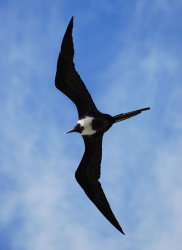
TURTLE TRACKER
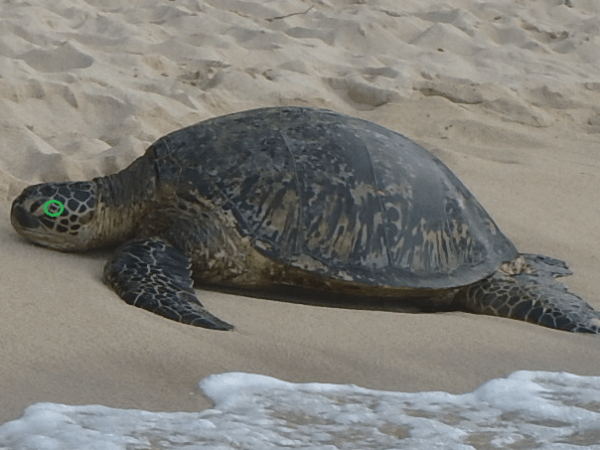
Name: DUKE (Named after Duke Kahanamoku, one of the first Hawaiian surfing royalty)
Sex: Male
Size: Large (3’+)
ID Marks: Clean shell, long tail, teardrop scale behind left eye.
Frequents: West side of beach in front of first house basking on the sand.
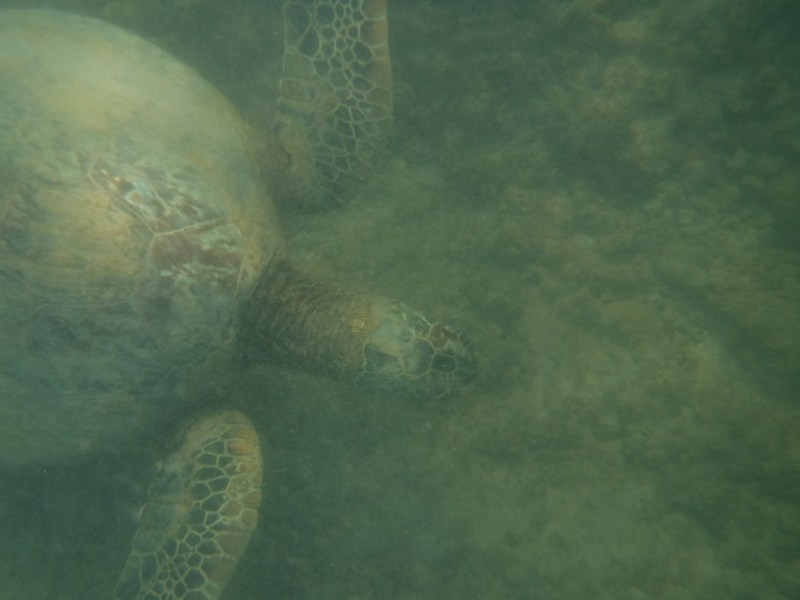
Name: HUELO (Hawaiian for tail.)
Sex: Female
Size: Medium (2.5′)
ID Marks: Large fibropapillomatosis tumor between left rear fin and tail.
Frequents: East side of bay in the shallow feeding and resting grounds.
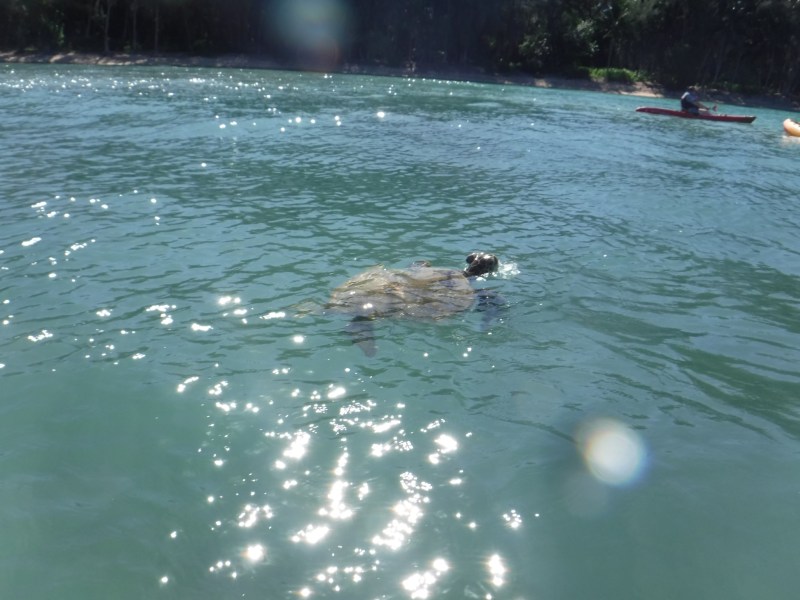
Name: MAKA (Hawaiian for eye.)
Sex: Female
Size: Medium (2′)
ID Marks: Large fibropapillomatosis tumor behind left eye.
Frequents: Shallow feeding grounds on East side of bay at high tide.
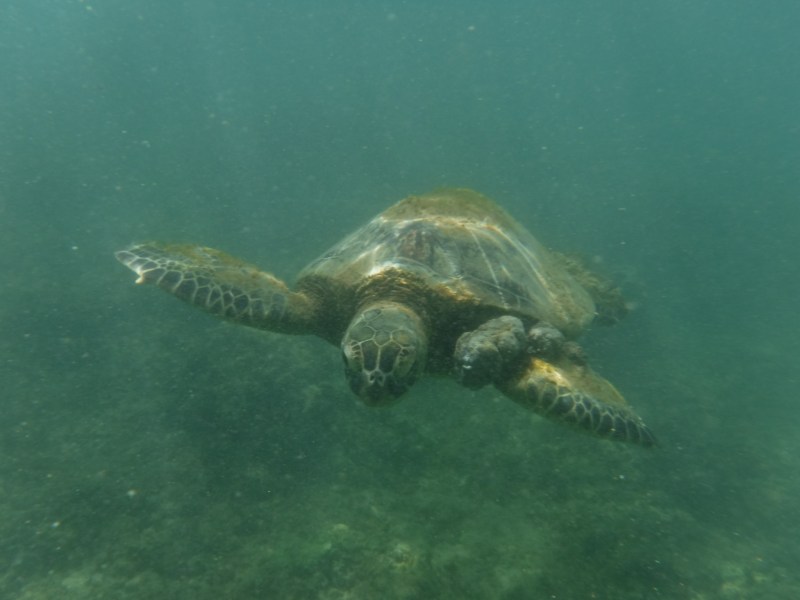
Name: OE (Hawaiian for bubbles.)
Sex: Female
Size: Medium (2′)
ID Marks: Large, medium and small fibropapillomatosis tumors over front left flipper.
Frequents: Shallow feeding grounds on East side of bay at high tide and shallow resting rocks
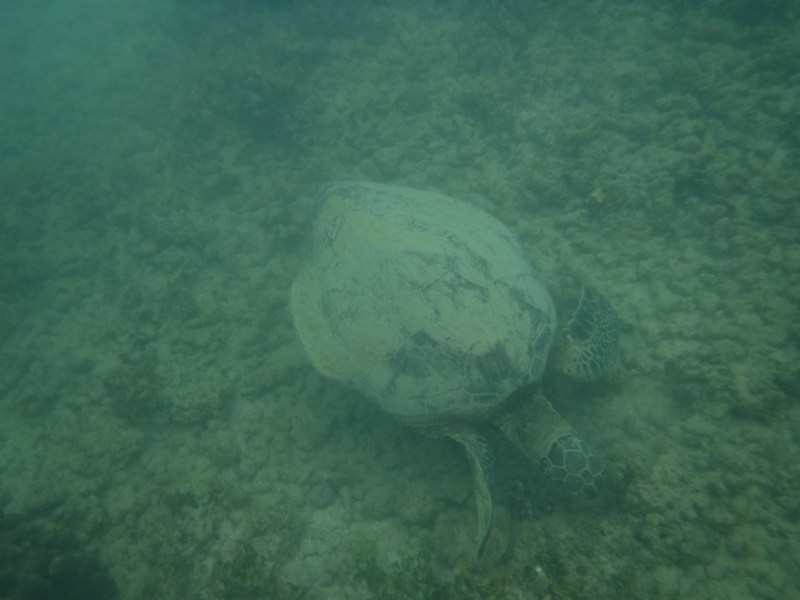
Name: MINO (Hawaiian for dent. Mino’aka is smile.)
Sex: Female
Size: Medium (2′)
ID Marks: Two dents on the right side of the shell carapace possibly old healed shark bites.
Frequents: Shallow feeding grounds on East side of bay and frequents cleaning station.
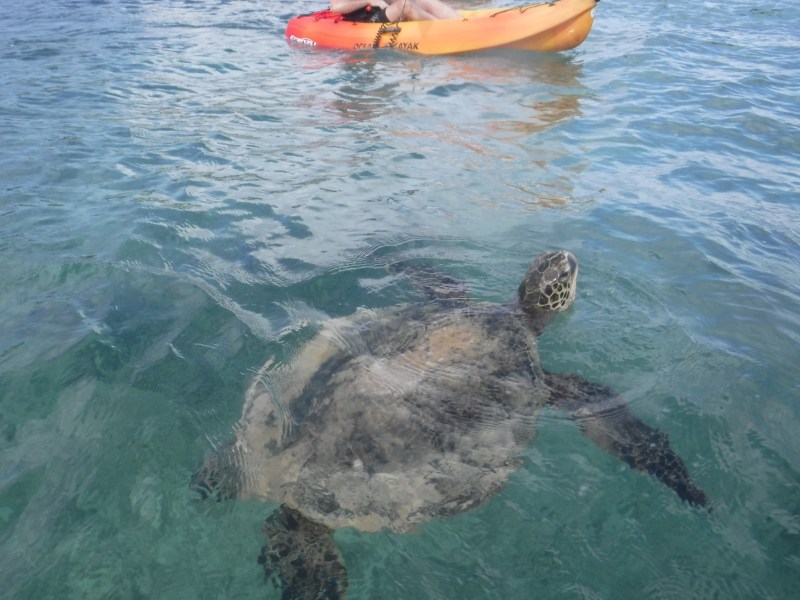
Name: KAIMANA (Hawaiian for diamond. Also Ocean power.)
Sex: Female
Size: Medium (2′)
ID Marks: Two diamond shaped barnacle rings on the top side of the shell carapace possibly old barnacles that have been scraped off.
Frequents: Spotted in several spots around the bay including shallow feeding area.
